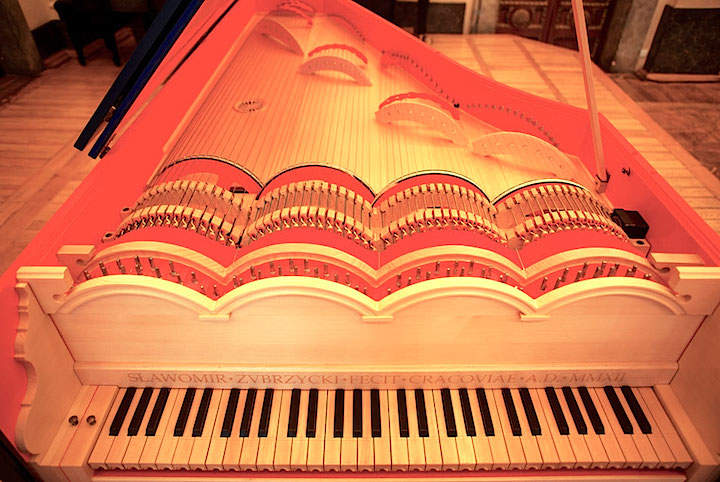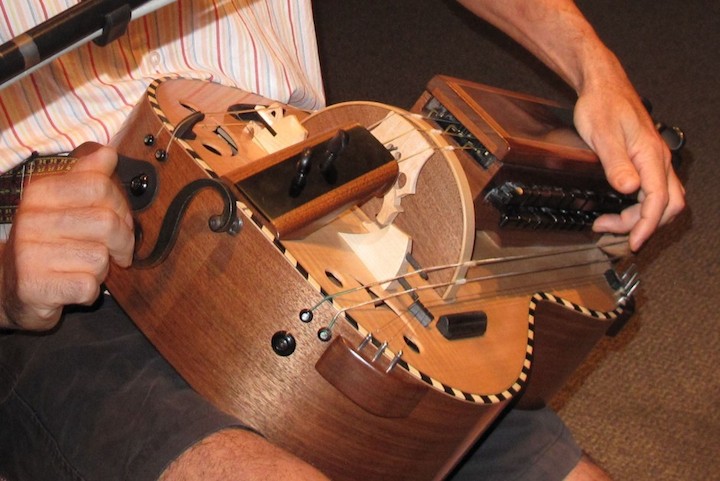
Polish keyboard player and instrument craftsman Slawomir Zubrzycki last last month unveiled his viola organista at a concert in Krakow. The 61-stringed keyboard instrument he believes was originally sketched by Leonardo da Vinci more than 500 years ago, and has seen the light of day only a handful of times since then.
- Classical Music 101: What Does A Conductor Do? - June 17, 2019
- Classical Music 101 | What Does Period Instrument Mean? - May 6, 2019
- CLASSICAL MUSIC 101 | What Does It Mean To Be In Tune? - April 23, 2019
The viola organista looks like a harpsichord. But rather than hitting the strings with a hammer, or plucking them with a plectrum (as is the case with a harpsichord), the viola organista’s keys actuate a mechanism that bows the strings with a series of wheels turned via a pedal-operated crankshaft.
The sound has the approximate range and timbre of a consort of viols.

The germ of Da Vinci’s design must’ve come from the hurdy gurdy, a lute-sized stringed instrument that creates sound with the help of a wheel and a compact keyboard. The origins of the hurdy gurdy go back about 1,000 years in Europe to the organistrum, which was larger than a hurdy-gurdy and needed an extra person to turn the wheel while the musician played it.
On the hurdy gurdy, little posts (called tangents) change the length of a string in order to change its pitch.
Da Vinci’s instrument uses 61 strings at fixed pitch, each is brought into contact with a horsehair-covered wheel when the player presses down on the keys. The beauty of Zubrzycki’s realisation is that the key not only controls the duration of the contact, it also controls the intensity.
There is no other keyboard instrument where the player can change the intensity (volume) of the sound after pushing down on the key. As a viola player can do with her bow, extra pressure on the key brings tighter contact between wheel and string, changing the dynamics and tone.
The results are gorgeous.
Although there are records of da Vinci’s sketches being brought to life before, the instrument has never been in circulation long or widely enough to inspire composers. The light wooden frame suggests the need for frequent tuning, and the attention five horsehair-covered wheels need suggests that the viola organista would make for a high-maintenance musical companion.
Still, it’s a beautiful reminder to all of us that there are ways of making musical sound acoustically that go well beyond the accepted canon of instruments.
Behold Zubrzycki’s handiwork:
UPDATE: Within an hour of posting this, I began to receive news that Leonardo’s sketches were too vague, and that Zubrzycki’s inspiration was another instrument, the Geigenwerk, originally conceived in Germany. You can read a learned person’s essay on it here.
John Terauds
- Classical Music 101: What Does A Conductor Do? - June 17, 2019
- Classical Music 101 | What Does Period Instrument Mean? - May 6, 2019
- CLASSICAL MUSIC 101 | What Does It Mean To Be In Tune? - April 23, 2019



